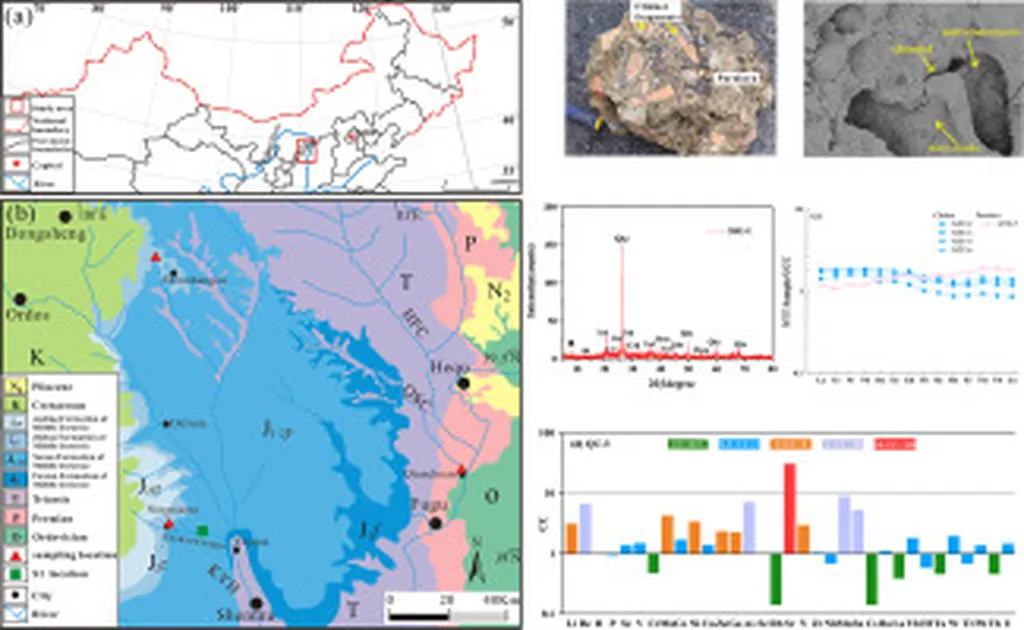In the heart of China’s energy sector, a groundbreaking study has shed new light on the vast potential of coal rock gas resources in the Ordos Basin, offering promising insights for the energy industry. Led by Kang Meng from the Research Institute of Exploration and Development at PetroChina Changqing Oilfield Company, the research published in the journal ‘Shiyou shiyan dizhi’ (translated as ‘Petroleum Experiment and Exploration Geophysics’) delves into the geochemical characteristics and geological significance of Carboniferous Benxi coal rock gas in the central and eastern parts of the basin.
The study focuses on the 8# coal seam, analyzing gas components and carbon and hydrogen isotope compositions from 33 coal rock samples collected from three wells in the area. The findings reveal that the methane content in the Benxi 8# coal rock gas ranges from 88.50% to 97.12%, with ethane content between 0.23% and 1.92%. Among the non-hydrocarbon gases, carbon dioxide content varies from 2.51% to 7.18%, and nitrogen content is consistently below 4.50%.
Kang Meng and his team concluded that the Benxi 8# coal rock gas is high to over mature thermogenic gas, derived from the thermal transformation of humic organic matter within coal seams. “This means we are looking at self-generated and self-stored coal-derived gas,” Meng explained. The study also highlights that the carbon dioxide in the coal rock gas is of mixed origin, generated from both the thermal cracking of organic matter and the thermal decomposition of carbonate minerals.
One of the most intriguing findings is the negative correlation between the carbon isotope (δ13C1) of the coal rock gas and the gas content. This relationship indicates that better storage and preservation conditions result in a higher degree of gas “accumulation.” In high to over mature coal rocks, the δ13C1 value of “accumulated” gas is significantly lighter, suggesting better gas-bearing capacity of the coal rocks.
The research also reveals that the hydrogen isotope characteristics of the coal rock gas indicate that the sedimentary water bodies of the Benxi 8# coal rock in the central and eastern Ordos Basin were brackish to saline, representing a transitional marine-continental sedimentary environment.
The implications of this research for the energy sector are substantial. Understanding the genesis and characteristics of coal rock gas can lead to more effective exploration and extraction strategies, ultimately boosting the commercial viability of these resources. As the world continues to seek diverse energy sources, the insights provided by Meng and his team could shape future developments in the field, offering a more nuanced approach to tapping into the vast potential of coal rock gas reserves.
This study not only advances our scientific understanding but also paves the way for innovative practices in the energy industry, ensuring a more sustainable and efficient future.

